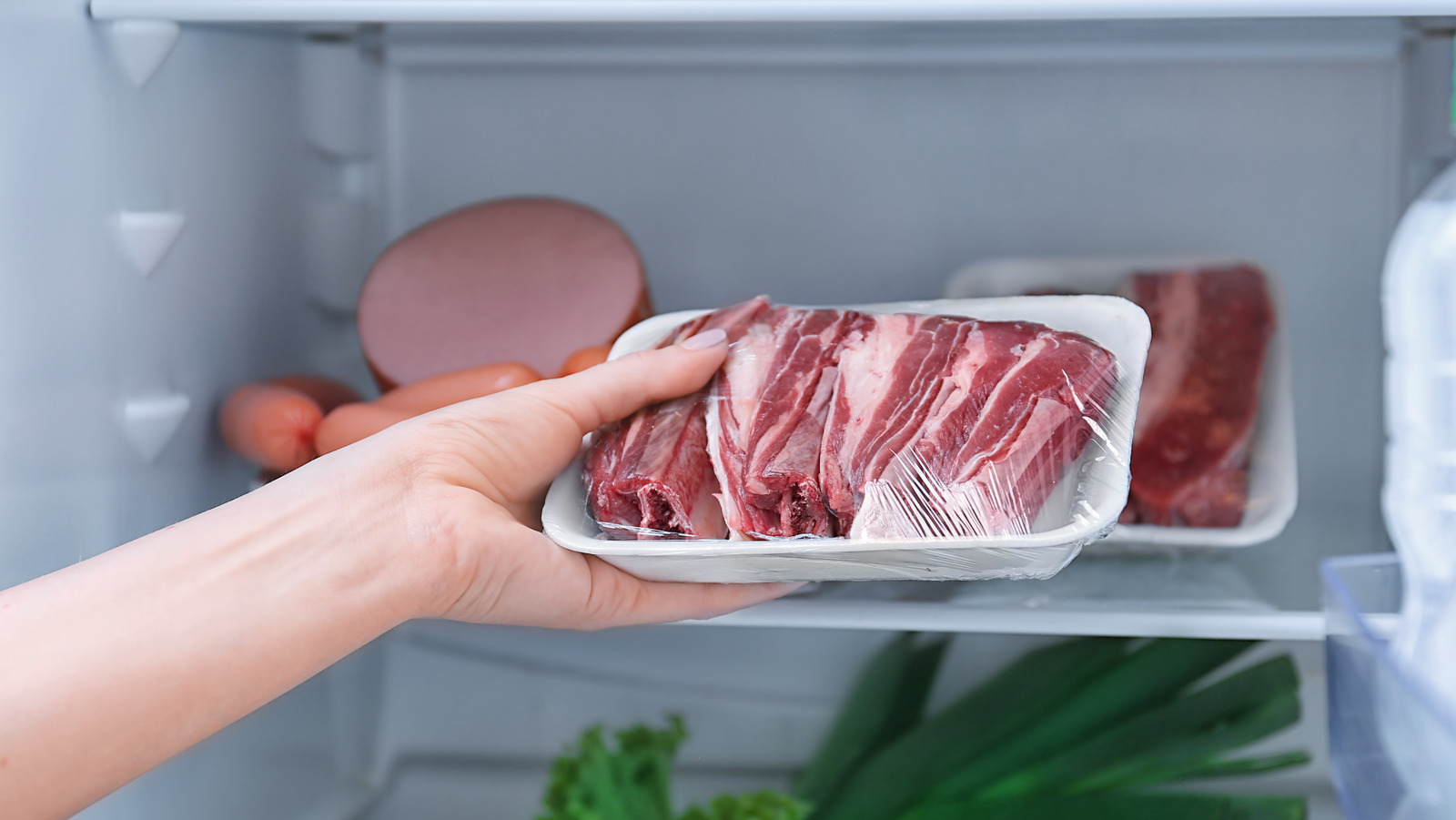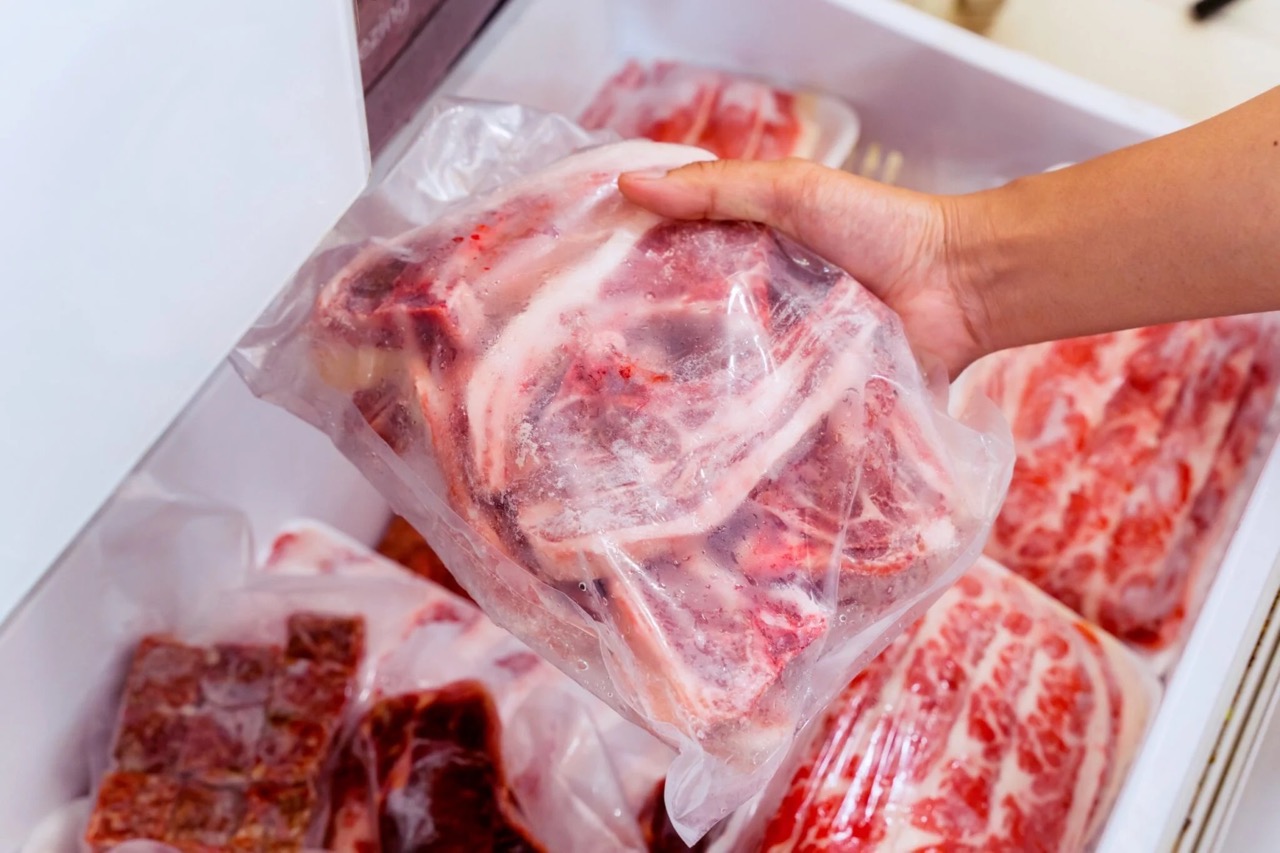

Articles
How Long Can Meat Stay In The Refrigerator
Modified: January 18, 2024
Discover how long meat can safely stay in the refrigerator. Read our informative articles on meat storage and food safety tips.
(Many of the links in this article redirect to a specific reviewed product. Your purchase of these products through affiliate links helps to generate commission for Storables.com, at no extra cost. Learn more)
Introduction
Welcome to the world of food preservation and storage! When it comes to keeping our meat fresh and safe to consume, refrigeration plays a vital role. However, it’s essential to know how long different types of meat can stay in the refrigerator before they start to spoil.
Properly storing meat in the refrigerator is crucial to maintain its quality, flavor, and safety. Understanding the factors that affect the shelf life of meat, recognizing signs of spoilage, and following recommended storage and handling practices are essential knowledge for any home cook or food enthusiast.
In this article, we will delve into the various factors that impact the shelf life of meat in the refrigerator, provide recommended storage times for different types of meat, discuss signs of spoilage to look out for, and offer valuable tips to maximize the freshness and longevity of your refrigerated meat.
So, if you’re ready to unlock the secrets of meat storage and discover how to keep your cuts and ground meat as fresh as possible, let’s dive in!
Key Takeaways:
- Proper refrigeration, packaging, and understanding meat types and storage times are crucial for maximizing meat freshness. Regular inspection and safe thawing methods also play a vital role in preventing spoilage and ensuring delicious, safe meals.
- By following recommended storage and handling practices, utilizing freezing and vacuum-sealing methods, and planning meals wisely, you can extend the shelf life of refrigerated meat, minimize waste, and enjoy high-quality, safe meals for longer periods.
Read more: How Long Can Meat Stay In Deep Freezer
Factors Affecting the Shelf Life of Meat in the Refrigerator
Understanding the factors that influence the shelf life of meat in the refrigerator is essential to ensure its freshness and safety. Here are some key factors to consider:
- Temperature: The temperature of the refrigerator is crucial in preserving the quality of meat. The ideal temperature for storing meat is between 32°F (0°C) and 40°F (4°C). Ensuring that your refrigerator maintains a consistent temperature within this range is vital to prevent bacterial growth and preserve the meat’s texture and flavor.
- Packaging: Proper packaging is vital to keep meat fresh. When purchasing meat, it is best to choose cuts that are tightly wrapped in plastic wrap or vacuum-sealed, as these methods help maintain freshness and prevent exposure to air. Repackaging meat in airtight containers or resealable bags can also extend its shelf life.
- Freshness at Purchase: The freshness of meat at the time of purchase also affects its lifespan in the refrigerator. Look for meat with a bright color, firm texture, and a fresh, not foul, odor. Be mindful of expiration dates or “sell-by” dates provided by the butcher or on the meat packaging.
- Quality of Meat: The quality of the meat itself plays a significant role in how long it can stay fresh in the refrigerator. High-quality, fresh meat from a reputable source will naturally have a longer shelf life compared to lower-quality or previously frozen meat.
- Type of Meat: Different types of meat have varying shelf lives in the refrigerator. Poultry and ground meat, for example, are more perishable and should be consumed within a shorter time frame compared to beef, lamb, or pork. Take note of the specific recommendations for each type of meat.
- Cross Contamination: Preventing cross-contamination is crucial to maintaining the freshness and safety of all food, including meat. Ensure that raw meat is stored separately from other foods, especially ready-to-eat items, to avoid the potential spread of harmful bacteria.
By considering these factors and following proper storage and handling practices, you can maximize the shelf life of meat in your refrigerator and enjoy fresh, delicious meals for longer!
Recommended Storage Times for Different Types of Meat
Understanding the recommended storage times for different types of meat is crucial to ensure their freshness and safety. Here are some general guidelines to follow:
Beef:
- Whole cuts of beef, such as steaks and roasts, can be safely stored in the refrigerator for 3 to 5 days.
- Ground beef should be used within 1 to 2 days.
Poultry:
- Whole poultry, such as chicken or turkey, should be consumed within 1 to 2 days.
- Poultry cuts, like chicken breasts or thighs, can be stored for 1 to 2 days.
- Ground poultry should be used within 1 day.
Pork:
- Whole cuts of pork, such as pork chops or pork tenderloin, can be refrigerated for 3 to 4 days.
- Pork ground meat should be used within 1 to 2 days.
Lamb:
- Whole cuts of lamb, such as lamb chops or lamb leg, can be stored in the refrigerator for 3 to 5 days.
- Ground lamb should be consumed within 1 to 2 days.
Veal:
- Whole cuts of veal, such as veal rib or veal loin, can be refrigerated for 3 to 5 days.
- Ground veal should be used within 1 to 2 days.
Other Meats:
- Fish and seafood should be consumed within 1 to 2 days.
- Game meat, such as venison or rabbit, should be refrigerated for 2 to 3 days.
It’s important to note that these are general recommendations. Always use your best judgment and inspect the meat for signs of spoilage before consuming. If the meat looks or smells off, it’s best to discard it to prevent any potential foodborne illnesses.
Additionally, if you do not plan on consuming the meat within the recommended storage times, it’s wise to freeze it for longer-term storage. Properly wrapped and frozen meat can retain its quality for several months.
By following these recommended storage times, you can ensure that your meat stays fresh and safe to enjoy, providing you with delicious meals and peace of mind.
Read more: How Long Can A Projector Stay On
Signs of Spoilage in Refrigerated Meat
Recognizing the signs of spoilage in refrigerated meat is crucial to avoid consuming spoiled or contaminated food. Here are some common indicators that meat has gone bad:
Appearance:
- Discoloration: Meat that has developed a gray, brown, or greenish hue is likely spoiled.
- Slime: A slimy or sticky texture on the meat’s surface indicates bacterial growth and spoilage.
- Mold: The presence of mold on the meat is a clear sign that it should be discarded immediately.
Smell:
- Foul Odor: A strong, unpleasant smell coming from the meat is a reliable indicator of spoilage. It may resemble a sour or rotten smell.
Texture:
- Texture Changes: A significant change in the meat’s texture, such as a slimy or excessively soft texture, indicates spoilage.
Read more: How Long Can A Mattress Stay In A Box
Date and Storage:
- Expired Date: If the meat has exceeded its expiration date or recommended storage time, it is more likely to be spoiled.
- Poor Storage Conditions: Meat that has been stored improperly, such as being left at room temperature for an extended period or exposed to fluctuating temperatures, is at higher risk of spoilage.
It’s important to note that these signs may vary depending on the type of meat and the specific circumstances. Always trust your senses and use your best judgment when assessing the freshness of meat. If you are in doubt, it is safer to err on the side of caution and discard the meat to prevent any potential foodborne illnesses.
Remember, proper storage and handling practices, along with regular inspection, can prevent the consumption of spoiled meat and ensure that you and your family enjoy safe and delicious meals every time.
Proper Storage and Handling Practices for Maximizing Meat Freshness
Adhering to proper storage and handling practices is essential to maximize the freshness and safety of meat in the refrigerator. Here are some key guidelines to follow:
1. Store at the Right Temperature:
Keep your refrigerator temperature between 32°F (0°C) and 40°F (4°C). This range inhibits bacterial growth and maintains the quality of the meat.
2. Use Airtight Packaging:
Wrap meat tightly in plastic wrap or place it in airtight containers or resealable bags to prevent exposure to air. This helps retain moisture and prevents the meat from drying out.
Read more: How Long Can You Stay In A Bathtub
3. Separate Raw and Cooked Meat:
Store raw meat, poultry, and seafood in separate containers or sealed bags to avoid cross-contamination with cooked or ready-to-eat foods. This prevents the spread of harmful bacteria.
4. Properly Label and Date:
Label your meat packages with the date of purchase or the expiration date to keep track of their freshness. This helps you use them within the recommended storage time.
5. Use the First In, First Out (FIFO) Method:
When storing multiple packages of meat, use the “first in, first out” method. Place the packages with the earliest expiration dates at the front, making it easier to consume them before the newer ones.
6. Avoid Temperature Fluctuations:
Avoid frequent temperature fluctuations by keeping the refrigerator door closed as much as possible and not overloading it with warm or hot food. Rapid temperature changes can impact the freshness of the meat.
Read more: How Long Can Grass Stay On A Pallet
7. Clean and Sanitize:
Regularly clean your refrigerator to prevent the accumulation of bacteria. Use mild soapy water or a solution of baking soda and water to sanitize surfaces.
8. Check for Spoilage Signs:
Regularly inspect the meat for any signs of spoilage, such as discoloration, odd smells, or sliminess. If you detect any of these signs, discard the meat immediately.
By following these proper storage and handling practices, you can extend the freshness and shelf life of your meat, ensuring that you always have high-quality ingredients for your meals.
Tips for Extending the Shelf Life of Refrigerated Meat
Want to make your refrigerated meat last longer? Try these tips to extend its shelf life and maintain its freshness:
1. Freeze Meat for Longer Storage:
If you don’t plan to use the meat within the recommended storage time, freeze it. Properly wrap the meat in freezer-safe packaging, such as plastic wrap or freezer bags, to prevent freezer burn. Frozen meat can retain its quality for several months.
Read more: How Long Can Cake Stay In The Freezer
2. Use the Vacuum-Sealing Method:
Invest in a vacuum sealer to remove air from the packaging and create a tight seal. Vacuum-sealed meat can stay fresh for a longer period, as the removal of air slows down bacterial growth and prevents freezer burn.
3. Portion Meat Before Freezing:
If you frequently use smaller portions of meat, divide larger cuts into individual servings before freezing. This way, you can thaw only what you need, reducing waste and maintaining the quality of the remaining meat.
4. Practice Safe Thawing:
When thawing frozen meat, do so in the refrigerator, under cold water, or in the microwave. Avoid leaving meat at room temperature for an extended period, as it promotes bacterial growth.
5. Cook or Repurpose Leftovers Promptly:
If you have leftover cooked meat, refrigerate or freeze it as soon as possible to prevent spoilage. Cooked meat can be safely stored in the refrigerator for 3 to 4 days or frozen for longer-term storage.
Read more: How Long Can A Hair Dryer Stay On
6. Use Transparent Containers:
Store meat in transparent containers or storage bags to easily monitor its condition and identify any signs of spoilage. This allows you to discard any spoiled meat promptly.
7. Keep a Clean Refrigerator:
Regularly clean your refrigerator to maintain a hygienic environment. Dispose of any expired or spoiled meat to prevent cross-contamination and the spread of bacteria.
8. Plan Meals and Shopping Accordingly:
Plan your meals and grocery shopping to minimize excess meat. Only purchase the amount of meat you realistically need to avoid waste and ensure everything is consumed within its recommended storage time.
By following these tips, you can maximize the shelf life of refrigerated meat, reduce food waste, and enjoy fresh and delicious meat for longer periods.
Conclusion
Proper storage and handling of meat in the refrigerator are essential to maintain its freshness, flavor, and safety. By understanding the factors that affect the shelf life of meat, recognizing signs of spoilage, and following recommended storage times and practices, you can ensure that your refrigerated meat stays in optimal condition for as long as possible.
From maintaining the right temperature and using proper packaging to preventing cross-contamination and practicing safe thawing methods, each step plays a critical role in preserving the quality and safety of your meat. It’s important to be vigilant, regularly inspect the meat for any signs of spoilage, and discard it if necessary to avoid any potential health risks.
Additional tips, such as freezing meat for longer storage, portioning it before freezing, and utilizing vacuum-sealing methods, can help extend the shelf life of meat even further. Planning meals and shopping wisely can also minimize waste and ensure that you consume the meat within its recommended storage time.
Remember, while the guidelines provided in this article serve as general recommendations, it’s essential to use your senses and judgment when evaluating the freshness of meat. Trust your instincts and prioritize food safety above all else.
By applying these proper storage and handling practices and implementing the tips shared, you can maximize the shelf life of refrigerated meat and enjoy delicious, high-quality meals with peace of mind.
Frequently Asked Questions about How Long Can Meat Stay In The Refrigerator
Was this page helpful?
At Storables.com, we guarantee accurate and reliable information. Our content, validated by Expert Board Contributors, is crafted following stringent Editorial Policies. We're committed to providing you with well-researched, expert-backed insights for all your informational needs.









0 thoughts on “How Long Can Meat Stay In The Refrigerator”